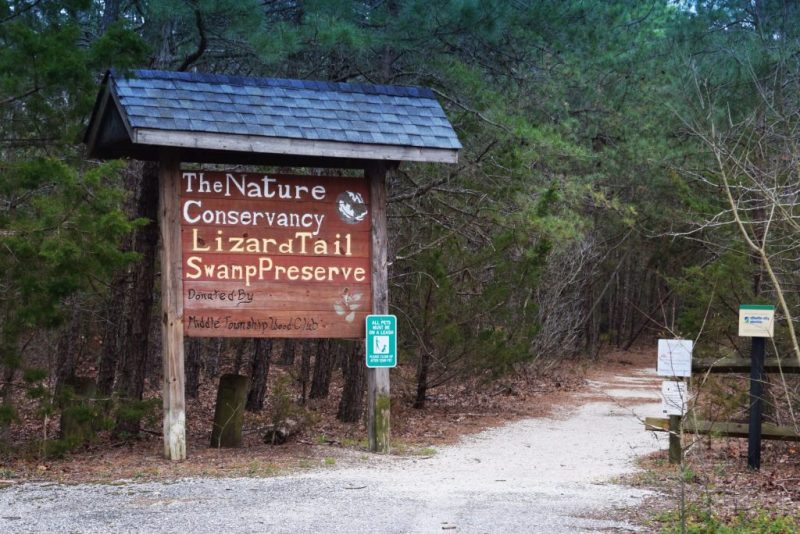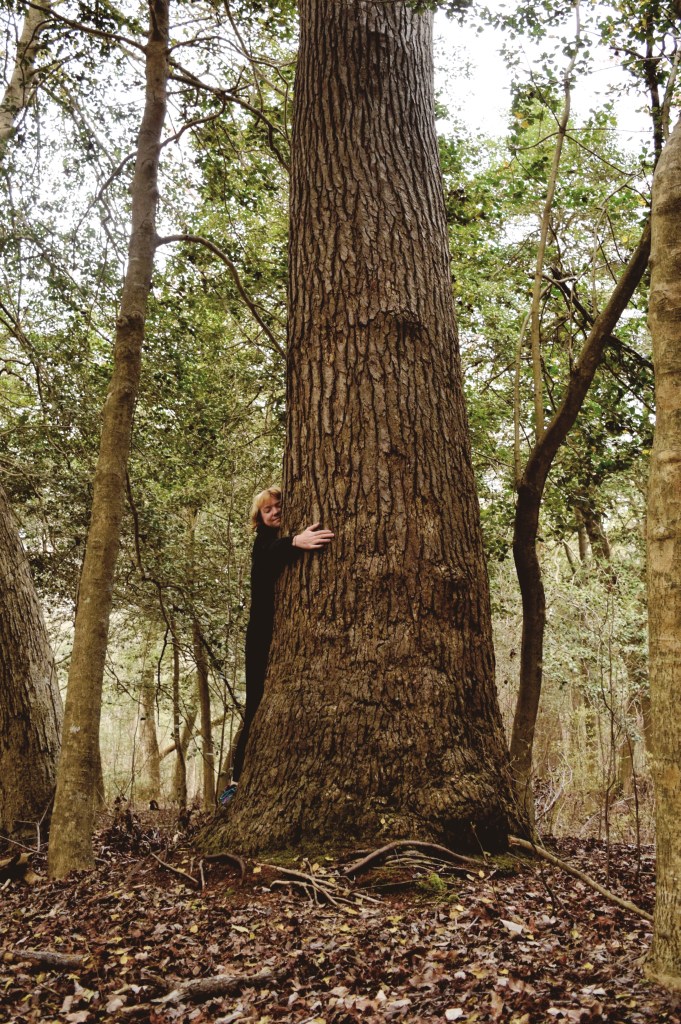Photos and story by Collin Hall
–
Do the Hike is a recurring feature in Do the Shore that features walks, trails, and hiking spots across Cape May County, no matter how small.
- 3 miles if you cut from the blue trail to the main yellow trail
- Easy parking year-round right by the trailhead
- Home to lots of trees and plants that aren’t found elsewhere in the county
- Owned and protected by The Nature Conservancy, an international non-profit
The enchanting Lizard Swamp Trails are home to what the Nature Conservancy calls “globally rare” lowland swamps. These lowland swamps are coastal freshwater marshes under 100 meters in elevation. The ground here is almost always moist and soggy, but not because of standing water like most of the county’s wetlands. The water instead comes from rainwater and river runoff that penetrates deep into the ground.

My feet bounced with every step on the thick canopy of leaves, which are slow to decompose because of the thick understory.
It’s amazing that such a unique ecosystem exists just steps from a major road and makes me wonder what other unique pockets of life hide just under my nose. Between the squishy ground, plants that don’t grow elsewhere in the county, strange holes in the ground that look like prime real estate for gnomes and fairies, and huge patches of carpet-like moss, this hike feels like a fairy tale walk.

The first part of the 3-mile trail takes you right through the lowland swamp, home to the biggest trees I have seen in Cape May County. I saw a lot of growth unique to this area, including mighty swamp cottonwood trees. These trees are truly herculean – their bark is thick and scaley, like the sagging scales of an aging dragon. The biggest swamp cottonwood that we saw had an impressive ~17-foot circumference.

Swamp cottonwoods only grow in a few small sections of the United States. Lowland swamps are too wet for most poplars, but swamp cottonwoods have adapted to the excess moisture and are huge as a result. These trees aren’t found elsewhere on the peninsula because most of our wetlands are salty.
Everybody should come to see these trees – they are probably among the oldest organisms in the county.
Shortly into the walk, we came across a creek with large mossy humps along its shore. The hike was filled with many strange knots, lumps, and bumps – many trees had bulbous burls at their bases likely caused by the bacteria that the wet ground brings.


You’ll find the Lizard’s Tail plant in the swamp if you come here in the summer months. These titular plants are native to America’s eastern coast and curl at their ends like the tip of a curious lizard’s tail.
I was told that these swamps are brutal to navigate in the summer months. We came in early spring just as greenery poked back up, but we will come back in the summer months for another “Do the Hike” column.
We aren’t looking forward to the many bugs the summer hike will bring, but we are excited to see the diverse foliage that the freshwater swamp supports.

The second half of the trail, always well-maintained and easy to follow, brought us into the trail system’s second major biome, a more common coastal forest. We passed by several clean benches on our way and were happy to see corridors of green evergreens over sandy trails.
There’s a part of the walk that cuts right through major thicket patches. The trails were wide enough on our early spring visit that we didn’t worry about getting snagged, but it might be an issue if you come here in warmer months.
I personally found these thick patches beautiful and pleasantly gloomy, like the thicket-filled poison swamps in a Super Mario level. But don’t say we didn’t warn you.
We were similarly warned by several signs at the trail’s entrance that ticks are common here, and even though we visited in early April, we picked several off our bodies at the end of the day. If you come here at any time besides winter, be wary of ticks and bring bug spray.
It might be the post-hike high speaking, but this trail is the best spot that we have visited yet for this column. It features a rare biome, wide well-marked trails, easy parking, and is longer than most of the hikes in the county. It’s easy enough for a day trip for people of all ages.


